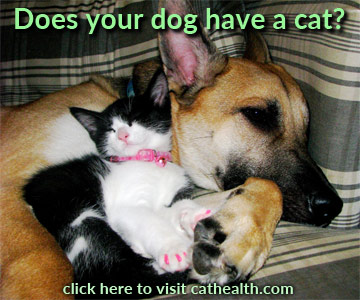First Aid for Electrocution Injuries in Dogs

Electrical shock is an extremely dangerous injury that sometimes occurs to dogs. Most of the time, electrocution in dogs occurs in puppies or those adult dogs that have a habit of chewing things. Usually, canine electrocution is the result of a dog that has chewed on an electrical cord.
Signs of Electrocution Injury and Dogs
Most of the time, a severe electrocution injury will cause a dog to convulse or become extremely rigid. Electrocuted dogs may stop breathing and go into cardiac arrest.
When a dog bites an electrical cord, the current that passes through him can cause muscle tremors that might result in his jaw clamping down on the cord. You might walk into the room and see your dog biting a cord and experiencing convulsions. Alternately, you might see him lying rigid or having seizures on or near an electrical cord. If you are outside, your dog might be electrocuted because the down wire is conducting current through a puddle in which he is lying.
What to Do for Electrocution Injury in Dogs
If you know or suspect your dog has received an electrical shock and you know the source, the first thing you should do is shut the electricity off to that cord.
Do not touch your pet if you suspect electrocution and are unable to turn the electricity off because you will be electrocuted too. If your pet is outside in a puddle, don't step on or near the water.
If you can't turn the electricity off, use a wooden stick to push your dog off the cord or away from the area before you attempt to touch him. Next, if your dog is conscious, get him to the veterinarian right away. If he is unconscious, check for breathing and a heartbeat. Perform rescue breathing or CPR as necessary.
If possible, have someone else drive you and your dog to a veterinary clinic while you perform rescue breathing or CPR.
Delayed Signs of Canine Electrocution
Sometimes a dog will bite an electrical cord and receive a shock but manage to get off the wire without becoming unconscious. If that happens while you are not in the room, you might not know right away that it has happened. However, it's likely that a dog that has done this will suffer burns to the mouth, and over time, fluid may build up around the lungs and negatively impact breathing. Signs of electrocution, in this case, can include:
- Drooling
- Foul odor from the mouth
- Visible sores on the gums and tongue
- Coughing
- Decreased or absent appetite
If you see any of these signs, take your dog to the vet right away.
Treatment for Electrocution in Dogs
When your dog arrives at the veterinarian after being electrocuted, further lifesaving measures will be taken if he is not breathing or doesn't have a heartbeat. Then, a thorough evaluation will be done, and he will be treated for shock, mouth burns, and fluid accumulation in the lungs. He will need to be monitored closely for a few days and treated for any additional signs that appear.
Prevention of Electrical Shocks in Dogs
Keep electrical cords hidden out of reach of your dog. Puppies should be under supervision at all times and in a crate when you're unable to watch them directly, and older dogs with a history of inappropriate chewing should also be in a crate when you can't watch them.
You May Also Like These Articles:
First Aid for Dogs: An Overview
Handling and Transporting a Sick or Injured Dog
First Aid Kit Essentials for Dogs
First Aid for a Dog with No Heartbeat
First Aid for a Dog That Isn't Breathing
Disclaimer: This website is not intended to replace professional consultation, diagnosis, or treatment by a licensed veterinarian. If you require any veterinary related advice, contact your veterinarian promptly. Information at DogHealth.com is exclusively of a general reference nature. Do not disregard veterinary advice or delay treatment as a result of accessing information at this site. Just Answer is an external service not affiliated with DogHealth.com.
Notice: Ask-a-Vet is an affiliated service for those who wish to speak with a veterinary professional about their pet's specific condition. Initially, a bot will ask questions to determine the general nature of your concern. Then, you will be transferred to a human. There is a charge for the service if you choose to connect to a veterinarian. Ask-a-Vet is not manned by the staff or owners of DogHealth.com, and the advice given should not delay or replace a visit to your veterinarian.



